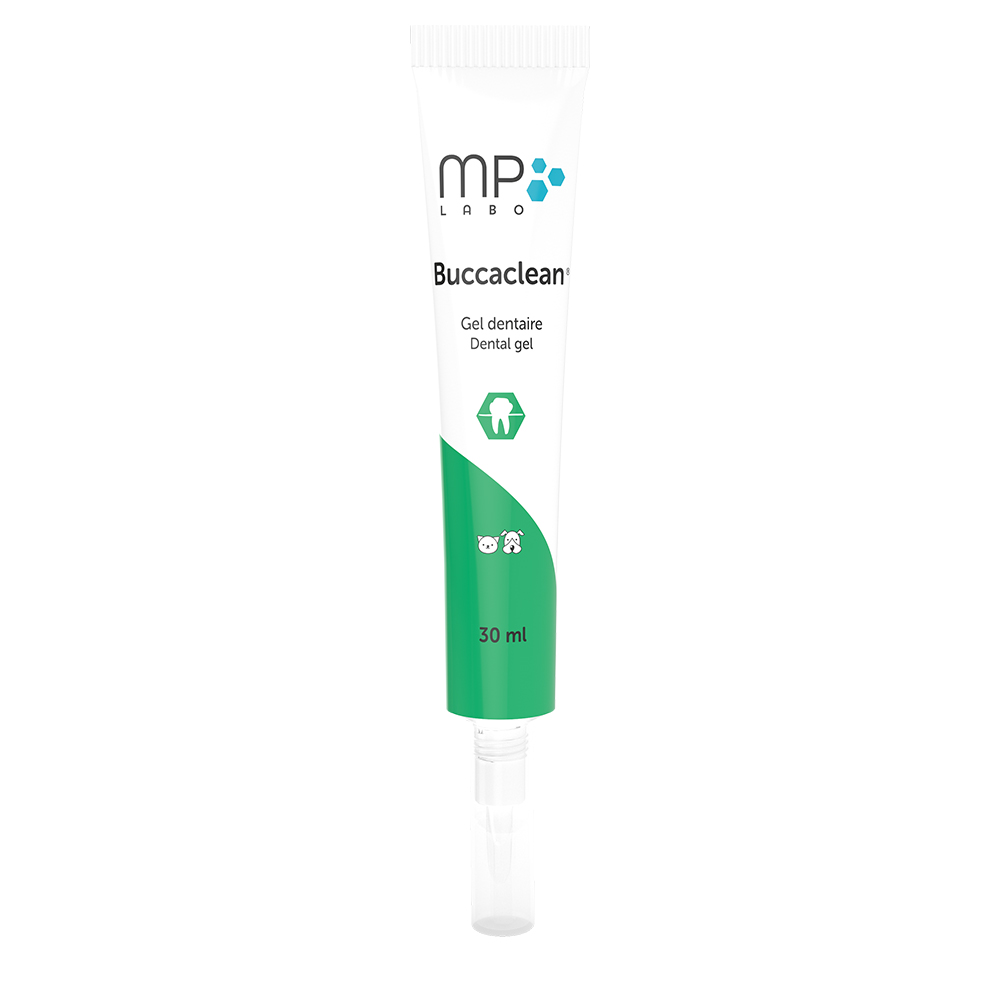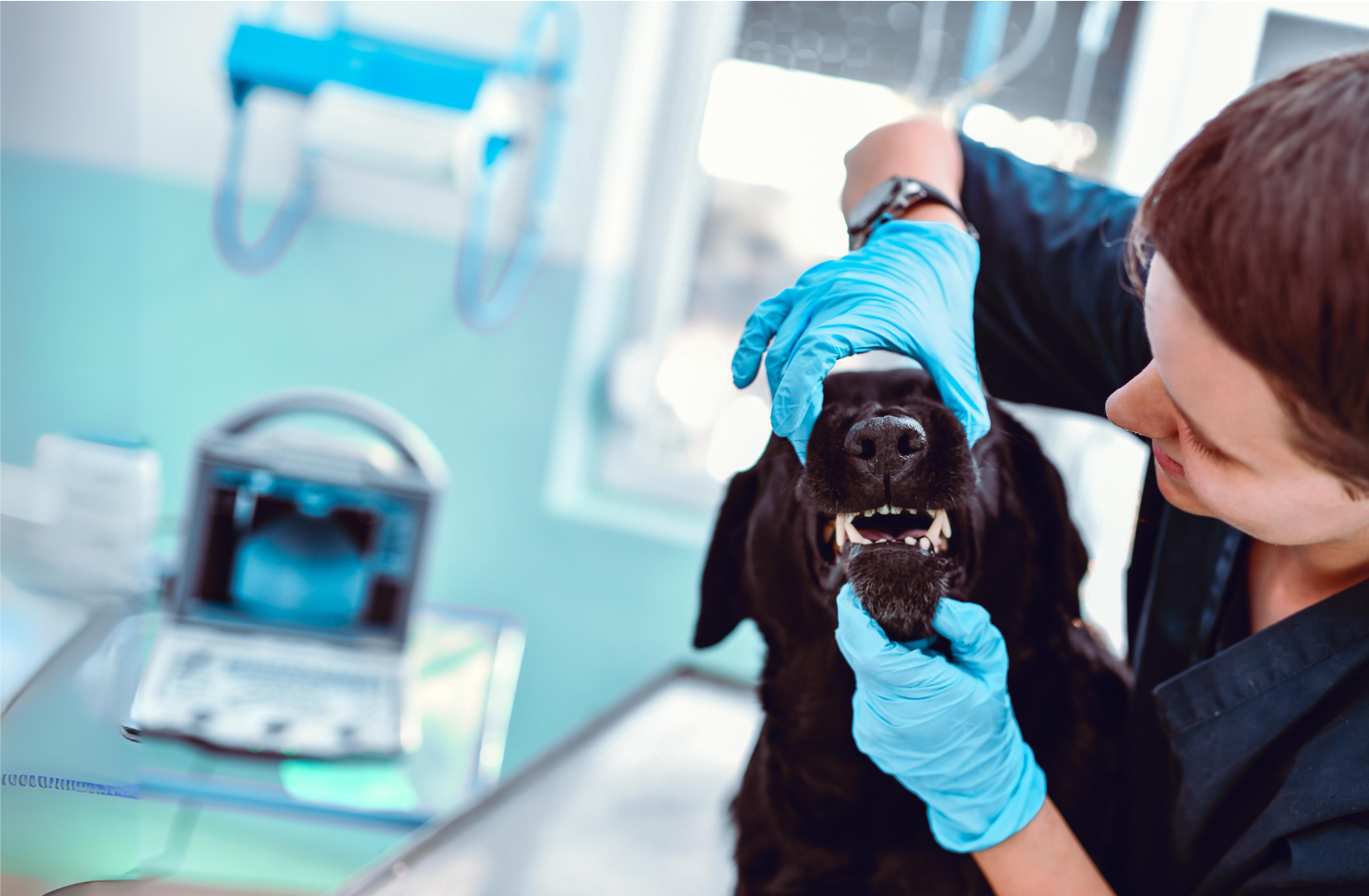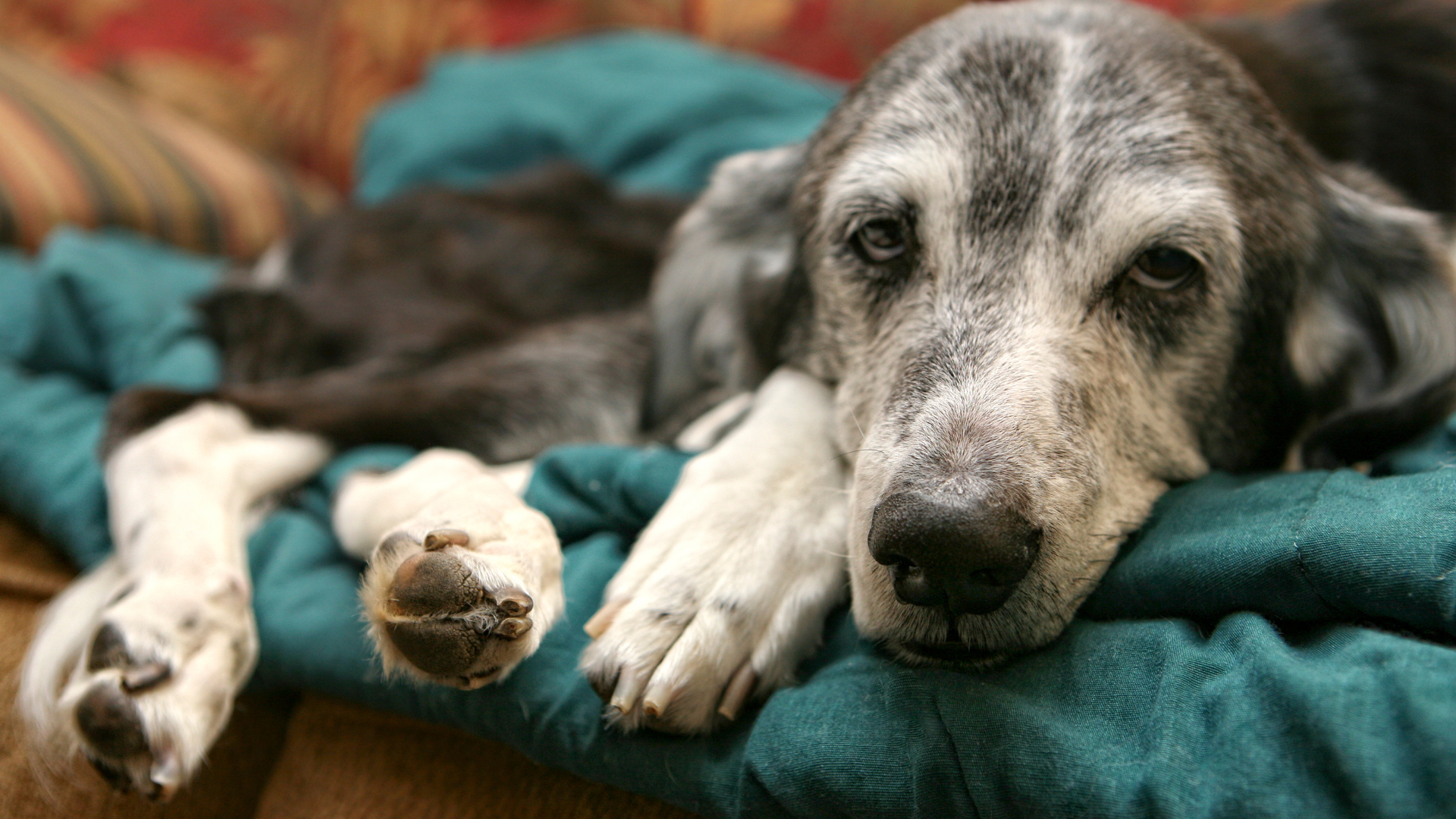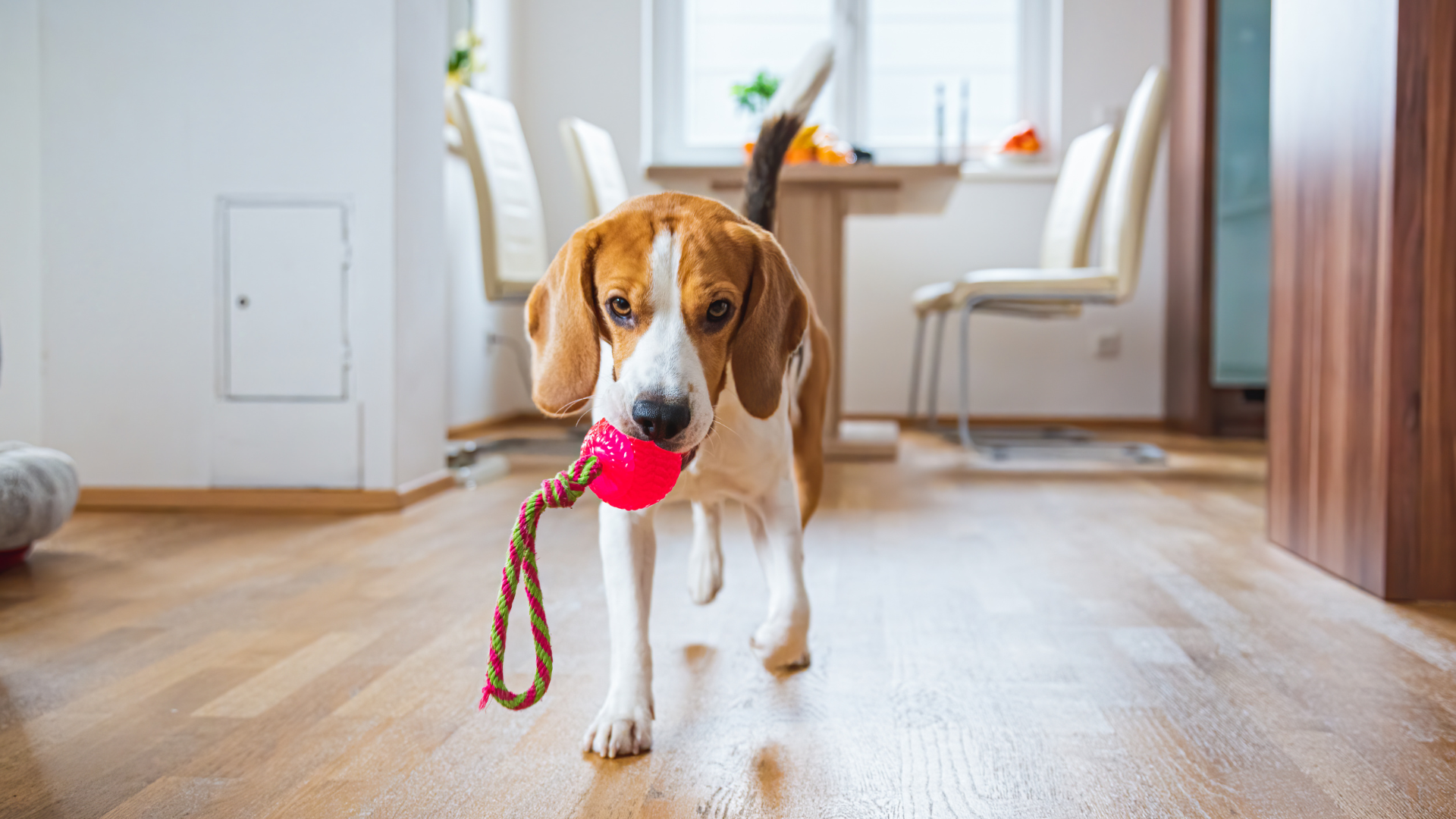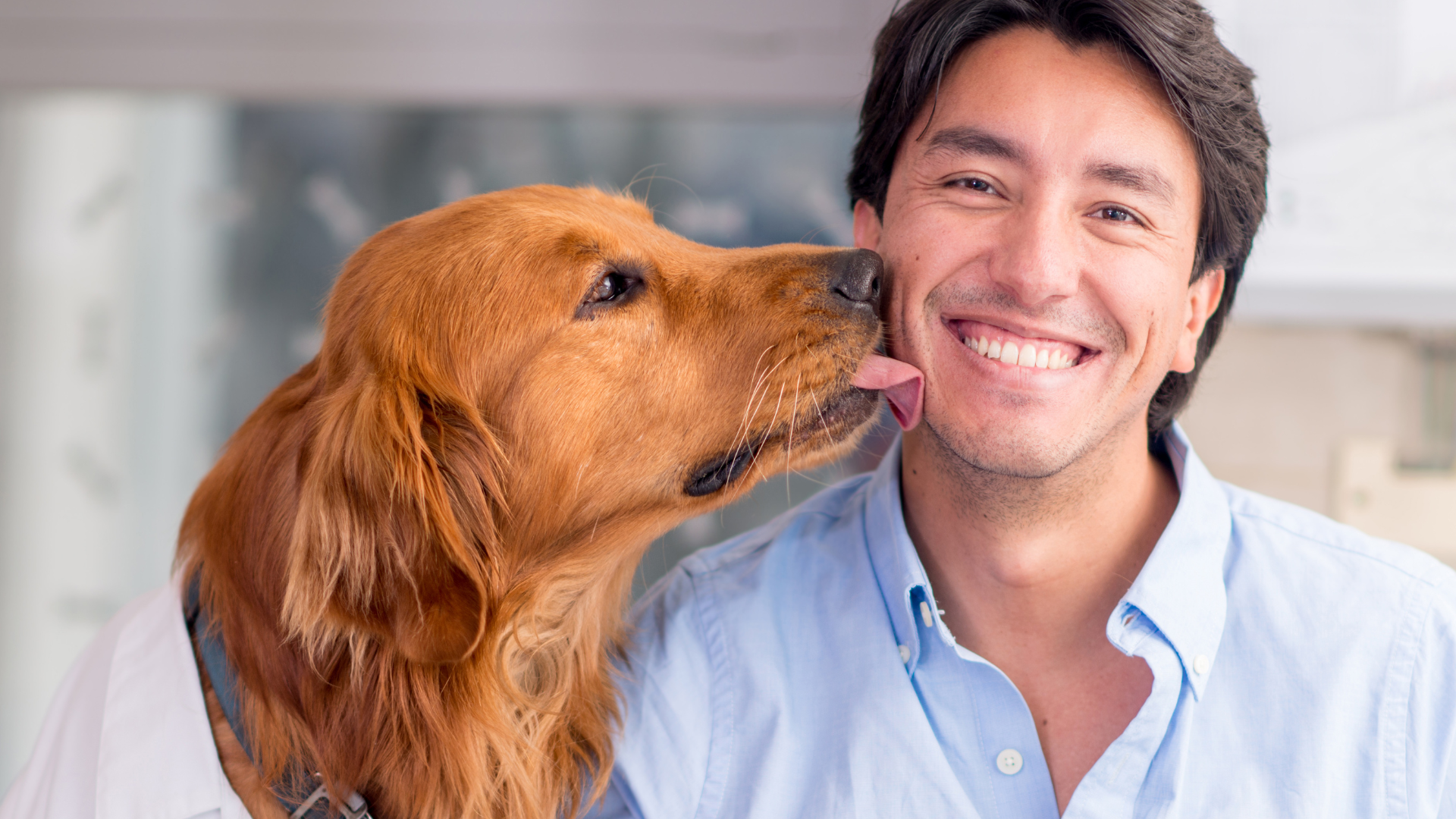
By Samaxia Ltd, manufacturers of MP Labo Buccaclean Gel
As animal health professionals, you are aware of the vital importance of good oral hygiene to the overall health of your patients. Dental conditions are one of the most common health problems in dogs and cats and can lead to chronic pain and bad breath. Halitosis is a common complaint in dogs and cats that can cause real discomfort for owners and alter the relationship they have with their pets. This blog post will provide you with information on the causes of halitosis, as well as the preventive measures you can recommend to your customers to prevent this problem in their pets.
Origin of halitosis
Halitosis can have a systemic origin1: in chronic kidney disease, the lack of glomerular filtration leads to the accumulation of metabolic waste in the blood, which can make the breath smell like urine or ammonia. In the case of diabetes mellitus, ketosis can lead to fruity breath. Gastrointestinal disorders such as intestinal obstruction or vomiting can also alter the smell of breath, to name but a few examples. However, the most common cause of halitosis in domestic carnivores is oral2.
Etiology of oral halitosis: proteins from food debris, gingival bleeding, desquamated epithelial cells, tissue necrosis, etc. are metabolised by Gram-negative anaerobic bacteria present in the oral cavity and saliva. This metabolism generates volatile sulphur compounds (VSCs), such as methyl mercaptan, hydrogen sulphide and dimethyl sulphide, which are the main contributors to unpleasant breath odour.
In addition, the bacteria responsible for the formation of VSC can metabolise certain sulphur-containing amino acids present in saliva and food to produce diamines such as putrescine and cadaverine, which are also responsible for the unpleasant odour3. The degree of halitosis is strongly correlated with the concentration of VSCs and diamines.
Consequences of halitosis 4,5
The main risk associated with the presence of VSCs and diamines in the oral cavity is inflammation, with its attendant complications. In addition, the alkaline salivary pH of carnivores (around 8.5 in dogs, compared with a normal pH range of 6.2-7.6 in humans) is conducive to the growth of bacterial species known to be associated with certain inflammatory processes in the oral cavity.
- VSCs increase the permeability of the oral mucosa, allowing endotoxins and prostaglandins to penetrate the tissue barrier. This situation exposes the animal to the development of periodontal disease, which in turn deepens periodontal pockets and exacerbates bacterial colonisation and halitosis.
- Diamines can be used as an energy source for the anaerobic bacteria that produce them, as well as for other bacteria present in the bacterial biofilm. These diamines can also promote the strength and anchorage of the biofilm on teeth by helping to bind the bacteria together in the biofilm, making them more resistant to antimicrobial agents and immune system attacks.
- The change in the microbiome in the event of inflammation further intensifies the production of VSCs and increases the quantity and quality of substrate available for putrefaction by anaerobic bacteria, which only makes the situation worse.
Did you know that halitosis can be transmitted? A study concludes that pets can transmit the bacteria responsible for bad breath to their owners6.
More worryingly, another study indicates that dental plaque can be a source and reservoir of antibiotic-resistant bacteria and that antibiotic-resistance genes could be exchanged between humans and pets living under the same roof7.
Ways of preventing halitosis in dogs and cats
Preventing halitosis linked to dental hygiene is first and foremost a matter of educating the owner2. According to one study, most dog owners believe that home dental care is important, but less than 4% of them say they brush their dog’s teeth every day8.
In addition to regular tooth brushing, other specific products for the oral hygiene of dogs and cats are available on the market and can be recommended, such as gels, drinking solutions, specific dental foods or chewable dental sticks to help reduce plaque build-up and prevent bad breath9.
MP Labo Buccaclean® gel
The new MP Labo product for a healthy mouth and soothed gums in one simple step.
- Reinforces natural defences in the oral cavity thanks to peroxidases which interfere with glucose metabolism and promote the formation of thiocyanate ions
- Limits bacterial adhesion with antibiofilm polysaccharide
- Alters bacterial viability with bromelain, a protease naturally present in pineapple
- Soothes the gums thanks to liquorice extracts, which modulate the synthesis of pro-inflammatory mediators by the bacteria in dental plaque
This new product dedicated to oral hygiene, with a meat flavour to make it easier for pets to take, makes life easier for owners thanks to its flexible, atraumatic tip for massaging the gums and its pre-assembled system that limits handling.
Find out more or order – https://www.nvsweb.co.uk/product/buccaclean-gel
Sources:
- Niemiec B, Gawor J, Nemec A, Clarke D, McLeod K, Tutt C, Gioso M, Steagall PV, Chandler M, Morgenegg G, Jouppi R. World Small Animal Veterinary Association Global Dental Guidelines. J Small Anim Pract. 2020 Jul;61(7):E36-E161. doi: 10.1111/jsap.13132. Erratum in: J Small Anim Pract. 2020 Dec;61(12):786. PMID: 32715504.
- Culham N, Rawlings JM. Oral malodor and its relevance to periodontal disease in the dog. J Vet Dent. 1998 Dec;15(4):165-8. doi: 10.1177/089875649801500401. PMID: 10518872.
- Milella L. The Negative Effects of Volatile Sulphur Compounds. J Vet Dent. 2015 Summer;32(2):99-102. doi: 10.1177/089875641503200203. PMID: 26415386.
- Barko, P. In: BSAVA Manual of Canine and Feline Gastroenterology, 11: 60-63. Gloucester: British Small Animal Veterinary Association, ©2020. DOI: 10.22233/9781910443361-3e.11
- Croft JM, Patel KV, Inui T, Ruparell A, Staunton R, Holcombe LJ. Effectiveness of oral care interventions on malodour in dogs. BMC Vet Res. 2022 May 5;18(1):164. doi: 10.1186/s12917-022-03267-8. PMID: 35513817; PMCID: PMC9074277.
- Iwanicka-Grzegorek E, Kepa J, Lipkowska E, Michalik J, Pierzynowska E, Placha R. Is transmission of bacteria that cause halitosis from pets to humans possible? Oral Dis. 2005;11 Suppl 1:96-7. doi: 10.1111/j.1601-0825.2005.01104.x. PMID: 15752112.
- Pérez-Serrano RM, Domínguez-Pérez RA, Ayala-Herrera JL, Luna-Jaramillo AE, Zaldivar-Lelo de Larrea G, Solís-Sainz JC, García-Solís P, Loyola-Rodríguez JP. Dental plaque microbiota of pet owners and their dogs as a shared source and reservoir of antimicrobial resistance genes. J Glob Antimicrob Resist. 2020 Jun;21:285-290. doi: 10.1016/j.jgar.2020.03.025. Epub 2020 Apr 18. PMID: 32315776.
- Enlund KB, Brunius C, Hanson J, Hagman R, Höglund OV, Gustås P, Pettersson A. Dental home care in dogs – a questionnaire study among Swedish dog owners, veterinarians and veterinary nurses. BMC Vet Res. 2020 Mar 18;16(1):90. doi: 10.1186/s12917-020-02281-y. PMID: 32188446; PMCID: PMC7081671.
- Di Cerbo A, Pezzuto F, Canello S, Guidetti G, Palmieri B. Therapeutic Effectiveness of a Dietary Supplement for Management of Halitosis in Dogs. J Vis Exp. 2015 Jul 6;(101):e52717. doi: 10.3791/52717. PMID: 26167807; PMCID: PMC4545009.
About Samaxia Ltd:
Samaxia Ltd is committed to innovation in animal health, bringing scientifically backed solutions to enhance the lives of pets and their families. Find out more – https://www.samaxia.com
Click here to view our full range of Pet Dental products.
